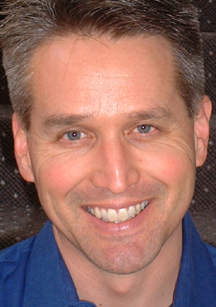 Work in Progress
Work in Progress
THE GREEN DREAM
Work in Progress, December 6, 2003
The following treatment for a 60-minute documentary special is copyright©2004 by Tamzina Films. Please address inquiries via e-mail to Tamsin Orion, or call Tamzina Films at 415-200-9478.
Over BLACK and TITLES, we hear the sounds of hammering. (Sort of.)
Plock! (pause) Plick! (pause, pause) Plud!
We come up from black to see a SMALL GIRL, maybe four years old, holding a hammer with both hands. She intently tries to hammer a nail into a board, but she is not good at it. (This footage: gorgeous 35mm film photography.)
Ploop! The hammer doesn't have much effect on the nail. The small girl makes a face and continues to "hammer."
A NARRATOR in voiceover.
NARRATOR (VO)
From a very early age, we want to build things.
Pla-rop! The hammer hits both the nail and the board.
NARRATOR (VO)
Maybe we start with a bird-house.
Whack! The girl lands a good one! She smiles and looks up for approval.
NARRATOR (VO)
But we don't stop there.
MONTAGE: Buildings of all kinds. Beautiful houses. Museums. Offices. Churches. Railway stations. Concert halls. A beautiful montage of lovely structures.
NARRATOR (VO):
Since ancient times, we have built homes. Shelters. Places to gather. Our desire to create lasting structures... Practical and beautiful... From wood, stone, glass... It seems as if the desire to build is an essential expression of our humanity.
As we return to the small girl, as she takes careful aim for a mighty swing, her image slows down, slower, slower, till it is stopped at the moment of impact.
NARRATOR (VO):
But what if, lately, we are doing it all wrong?
DIP TO BLACK.
INTERTITLE OVER BLACK: How are we doing it wrong?
UP FROM BLACK in the office of Stanford University professor GIL MASTERS.
GIL MASTERS (OS)
We have created a problem for ourselves. Over the last 150 years or so, we have found spectacularly productive ways to use energy and resources. More than we ever had before in the history of mankind.
GIL MASTERS (ON CAMERA)
So we haven't had to be very smart about how we built things. We didn't have to be smart. We could build and light and heat things however we wanted. We didn't have to worry about where we built, because we could travel to wherever it was...
Professor Masters and other experts begin to lay out the DARK FIRST ACT. It is dark, because we see how we have strayed from the path of smart, efficient "green" building. We see a "utopia" that existed until the turn of the 20th century: a utopia where we built smartly and sustainably, taking advantage of natural light, heat, and cooling; reusing and recycling what we could; living lightly on the land, working where we lived, and living where we worked.
GIL MASTERS
We didn't acquire so many cattle that our herd would be unsustainable; we knew we couldn't overgraze our meadows because then all the cattle would die. It's the same thing with forests, or rock quarries, or wells for water...
An expert economist; an expert planner; an expert designer all talk about how we are doing it wrong. Ultimately, they talk about the consequences .
INTERTITLE OVER BLACK: Just how bad is it?
In this VERY DARK SECOND ACT, we see just how bad it is. It's very bad. The market economy doesn't reward long-term stewardship of anything: land, water, and energy are all being manipulated and damaged in order to maximize short-term profits. Everyone agrees that green building is desirable -- for somebody else. At every step of the building process -- planning, design, municipal/state requirements, distributors, suppliers, etc., -- there are no systemic incentives to build green. There is too much inertia and short-term self-interest for green building. Ignorance is partly to blame -- architecture schools don't even teach green building design. Contractors don't recognize green building alternatives. Governors and legislators and mayors and councilpeople don't seize opportunities to require green building in their states and cities.
In quick segments, we see mistakes being made at every level of the building design and supply chain -- we see site-specific advantages to sun and shade ignored; we see opportunities for solar and wind power dismissed; we see vinyl touted as an eco-friendly material; the list goes on...
But the fact is, some people are trying to make a difference. There is a transformation going on in some quarters...
INTERTITLE OVER BLACK: The Transformation
After the Dark First act and Very Dark Second Act, this SUNNY THIRD ACT uses the Sun Biological Field Research Station on Jasper Ridge as an example of doing it right from the get-go.
We see experts testifying to what can be done right -- and pointing to examples in all kinds of building -- residential, small office, large office, educational, medical, civic buildings -- the LEED-certified buildings around the country.
In short, we end with hope. Hope for the future. For our kids -- like the little girl, building a new tomorrow...